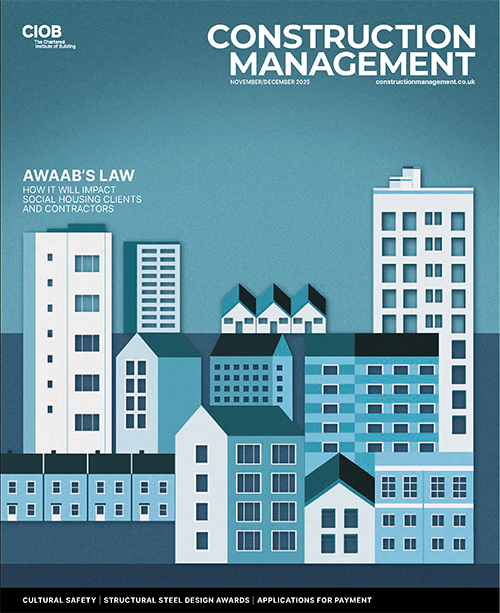Nouman Qadir MCIOB reviews a case where a contractor won a dispute over the validity of an agreement made over a popular instant messaging platform.

In a recent judgment, the High Court ruled that a WhatsApp exchange between a property developer and demolition contractor constituted a valid contract.
Jaevee Homes v Fincham discussed two main points, including whether a written formal contract existed between parties based on the informal WhatsApp and email communications; and whether the invoices issued by Steven Fincham (the Defendant) were valid payment applications as per the Housing Grants, Construction and Regeneration Act (HGCRA).
Typed, not signed: WhatsApp and contracts
A valid contract requires four key elements: offer, acceptance, intention to create legal relations, and consideration.
A common misconception among people unfamiliar with contract law is that a contract only exists when a formal document is signed. However, this is not the case.
Section 15(1) of the Electronic Communications Act 2000 defines electronic communication broadly as covering emails, social media, phone calls, texts, fax and websites.
This means contracts can be formed verbally or via platforms like WhatsApp, Facebook, Instagram and TikTok. If a contract allows communication by “electronic means”, it is not limited to email.
In Jaevee’s case, the court found that Fincham provided a quotation on 11 May 2023 to Jaevee Homes (the Claimant), followed by email correspondence about it. A further written exchange occurred on 17 May 2023 through WhatsApp.

The Court held that the informal WhatsApp conversation constituted formal acceptance of Fincham’s quotation, forming an agreement. As this was a commercial transaction, the intention to create legal relations was presumed, thus confirming that a formal contract had been formed.
Although Jaevee issued a formal written contract titled ‘Shortform Subcontract’ to Fincham on 26 May 2023, the court ruled that its terms were not incorporated, as it was sent after the contract was formed on 17 May 2023, and it was not accepted by Fincham.
The basis of calculation
The court also considered whether an invoice listing the work done and stating the sum due without a detailed breakdown could qualify as a valid payment application. Jaevee argued it was invalid under the HGCRA, as it failed to provide “the basis on which that sum is calculated”.
In the 2018 decision of Grove Developments v S&T (UK) Ltd, the court held that a payment application or payless notice can satisfy the basis of calculation requirement if it refers to a detailed calculation set out in another clearly identified document provided to the other side.
In the S&T case and others, such as Mannai Investments Co Ltd v Eagle Star Life Insurance and Henia Investments Inc v Beck Interiors Ltd, the court ruled that a payment application or a payless notice should be construed with reference to its background, considering how a reasonable recipient would understand it.
The court emphasised that, in these cases, it would not be swayed by overly technical arguments or attempts to dismiss the notice on artificial grounds, and the notice should provide an adequate agenda for a dispute over valuation or any cross claims.
The Jaevee case: what is new?
In Jaevee’s case, the court commented that assessing whether the invoices were properly set out was a question of fact and degree, which must be considered in the context of the contract.
The court considered that the invoices referred to Fincham’s quotation and marked-up plan. These invoices can be read together with Fincham’s quotation and in the context of the previous dealings between the parties.
In deciding whether the invoices were intended as payment applications, the court again stressed upon a fact-sensitive approach, considering the intent behind the payment notices.
It endorsed Fincham’s position that Jaevee’s arguments regarding the contract requirements, the application of the HGCRA/Scheme, and the validity of the invoices were overly rigid and disconnected from the practical realities of how such contracts commonly operate.
In the final analysis, the court found three out of four invoices as valid invoices and payment applications, thus confirming the findings of the S&T and various other case law.
One invoice was considered invalid because it was the second invoice issued in the same month.
Interpretation of HGCRA
In conclusion, the court observed that a strict interpretation of the HGCRA could make compliance nearly impossible for some parties, particularly contractors, undermining the Act’s purpose.
It highlighted that overly technical requirements could unfairly deny parties their right to interim payments.
This suggests that a detailed mathematical breakdown of sums is not required for a valid payment application or payless notice, and the parties would continue to benefit from some flexibility in how the HGCRA is interpreted regarding the basis of calculation for these notices.
Nouman Qadir MCIOB is a junior associate at Quigg Golden specialising in construction law disputes.
Comments
Comments are closed.












In the third paragraph of the above article. The Author expressly states, inter alia;
‘A valid contract requires four key elements: offer, acceptance, intention to
create legal relations, and consideration’.
There is an essential fifth requirement to successful form a valid contract – ‘Capacity’.
Paul Bennett, MSc Con Law, FCIOB RET
Paul,
Thanks so much for your kind input. It is truly appreciated and has been duly noted.
The sentence in the excerpt says, “four key elements”, and not “all essential elements” to form a contract. Capacity is the fifth essential element to form a binding contract, and the others could be legality, and certainty of the contract terms etcetera.
That said, in the context of commercial construction contracts, both capacity and intention are generally not an issue. Intention is usually presumed, and issues around capacity tend to arise only in rare situations such as someone attempting to enter into a contract with a minor, someone lacking mental capacity, or intoxicated – such conditions would be particularly unusual in a commercial setting.
On the topic of intoxication, a contract may be voidable if one party was so intoxicated that they could not understand the transaction and the other party knew (or should have known) of that condition, but that is indeed a high bar to meet. Proving such awareness, especially through a text-based conversation like WhatsApp, Facebook Messenger etcetera, would be extremely challenging, particularly when the messages are coherent and clearly related to a commercial matter.
Given that Capacity, is typically not an issue in this context and other essential elements like legality of terms were not relevant to the specific case law discussed, the author did not include it among the “key elements” referenced in the article.
I hope this helps clarify the intention behind that part of the piece, and again, really appreciate your comment, and insight.
Regards,
Nouman Qadir MCIOB, PMP, Prince 2 Practitioner.